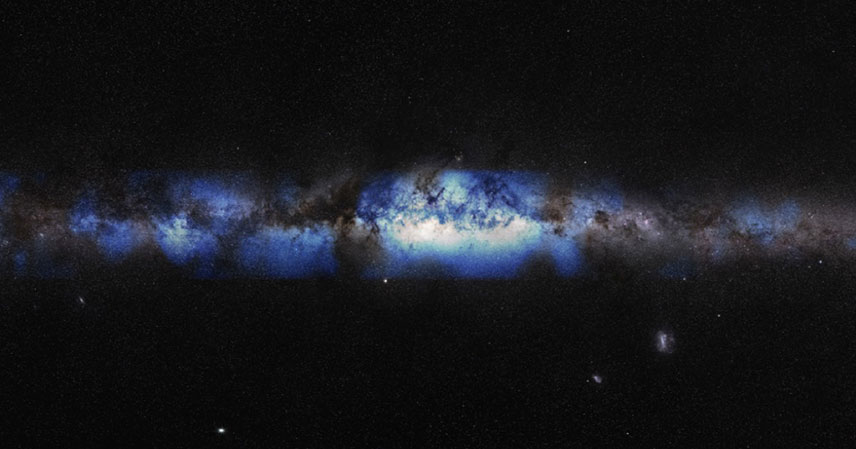Our universe, a vast expanse of stars, galaxies, and planets, is fundamentally composed of matter. But a profound cosmic mystery lingers: where is all the antimatter? The Big Bang theory suggests equal creation of matter and antimatter, yet antimatter is incredibly scarce. This imbalance, known as the matter-antimatter asymmetry, is one of the biggest unsolved puzzles in physics. Scientists are tirelessly searching for answers, and a tiny, elusive particle – the neutrino – may be the key.
The quest to understand this asymmetry is a journey into the heart of fundamental physics, challenging our understanding of the universe’s origins and evolution. This blog post delves into the fascinating world of neutrinos and their potential role in solving this cosmic enigma.
What Happened to All the Antimatter? 🤔
The Big Bang, the prevailing theory for the universe’s creation, predicts equal amounts of matter and antimatter. When matter and antimatter collide, they annihilate each other, releasing energy. If this were perfectly balanced, the universe should have been devoid of matter. Yet, here we are, surrounded by matter. This discrepancy is a major challenge to our current understanding of cosmology.
Physicists believe the answer lies in a subtle difference in the behavior of matter and antimatter. This difference, however small, would have allowed a slight excess of matter to survive the annihilation process, leading to the universe we observe today.
The Mysterious Neutrino 🫄
Enter the neutrino, a subatomic particle with incredibly weak interactions. These particles are so elusive that trillions of them pass through our bodies every second without us even noticing. Their weak interactions make them particularly interesting to physicists investigating the matter-antimatter asymmetry.
Many theoretical models propose that neutrinos, or their properties, play a crucial role in the imbalance. These models suggest that subtle differences in neutrino behavior, perhaps related to their oscillations between different types (electron, muon, and tau neutrinos), could have tipped the scales in favor of matter.
Neutrino Experiments and the Search for Answers 🔬
Scientists are conducting numerous experiments worldwide to probe the properties of neutrinos with unprecedented precision. These experiments aim to detect tiny differences in the behavior of neutrinos and antineutrinos, searching for evidence that could explain the matter-antimatter asymmetry.
Large-scale detectors, buried deep underground to shield them from cosmic rays, are used to capture the rare interactions of neutrinos. The data collected from these experiments is meticulously analyzed to look for any deviations from the standard model of particle physics, which could point towards new physics and a resolution to the matter-antimatter puzzle.
The Significance of Uncovering the Mystery 🌌
Understanding the matter-antimatter asymmetry is not just an academic pursuit. It’s fundamental to our understanding of the universe’s evolution and the conditions that allowed for the formation of stars, galaxies, and ultimately, life itself. The answer to this question has profound implications for cosmology and particle physics.
A successful resolution to this mystery would represent a significant advancement in our scientific knowledge, potentially leading to breakthroughs in other areas of physics and a more complete understanding of the universe’s fundamental laws.
Key Takeaways 🔑
- The universe contains far more matter than antimatter, a phenomenon known as the matter-antimatter asymmetry.
- The Big Bang theory predicts equal amounts of matter and antimatter, creating a significant puzzle for physicists.
- Neutrinos, elusive subatomic particles, are considered key players in several theoretical models attempting to explain this asymmetry.
- Ongoing experiments are designed to study neutrinos with high precision, searching for subtle differences between neutrinos and antineutrinos that could resolve the mystery.
- Unraveling the matter-antimatter asymmetry is crucial for a more complete understanding of the universe’s origin and evolution.
The search for the missing antimatter continues, with neutrinos potentially holding the key. The ongoing research, pushing the boundaries of experimental physics, promises exciting discoveries that could revolutionize our understanding of the cosmos. The quest to understand the universe’s fundamental building blocks is a journey of discovery, and the matter-antimatter asymmetry remains one of its most compelling mysteries, much like the enduring cryptographic puzzle of the CIA’s Kryptos K4 code.
Source: How a mysterious particle could explain the Universe’s missing antimatter



